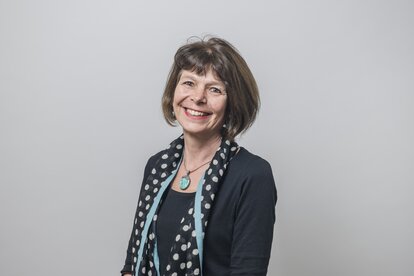Mona Sherpa, our Deputy Country Director, uncharacteristically hesitates when asked her thoughts about everything that has happened since the earthquake struck on 25 April last year. “We have made real progress”, she says “but not as much as we would have liked to”. Indeed the path of Nepal’s post-earthquake reconstruction has been a difficult one, hampered by the blockade on imports across the Indian border for much of the latter part of 2015, and entangled in the red tape of bureaucracy. It is easy, but over-simplistic, to blame the government. The reality of many humanitarian organisations arriving in Nepal without prior knowledge of local conditions, plus large sums of money promised government to government but not necessarily given, made an unfortunate combination with divisive national party politics and suspicions of financial non-transparency. This situation hampered efforts to ensure a coordinated government approach. The National Reconstruction Authority (NRA), established in June 2015, was only endorsed by parliament in December 2015 – starting work in January 2016. Just this month (15 April) it brought out guidelines on how international NGOs (INGOs) should work on reconstruction efforts; before that, most were effectively barred from so doing – including any provision of cash support or shelter.
How did this affect us in our work? Given the existing bilateral agreement between the Governments of Nepal and Switzerland, we were able to initiate training in building construction early on. With the financial support of SDC (the Swiss Agency for Development and Cooperation) we have so far been able to train 880 masons and, as part of the training, to reconstruct over 200 houses. We were one of 12 INGOs to receive prior authorisation for reconstruction through a different regional authority (the Department of Urban Development and Building Construction). This has meant that, in collaboration with Solidar Suisse, we could at least start work on the new houses in January, once supplies across the Indian border were forthcoming. Reconstruction of the first schools was initiated as part of our collaboration with CARITAS Switzerland, for which we have the agreements with the Department of Education.
As the NRA ban on supporting livelihood activities did not apply to those projects already approved by the government and operating in the earthquake-affected areas before the quake, we have also been able to work with communities through these interventions. They include work on coffee production, environmental education in schools, safe migration, and bio-energy.
The earthquake experience, says Mona, has underlined for her the importance of being familiar with local community dynamics – of working with and supporting self-help efforts, and knowing who are the truly vulnerable who require direct support. Announcements of government support for house-building (a grant of NRs 200,000 or approximately CHF 1,800 per household) have encouraged people to wait for this money, in part because it is tied to government-approved earthquake-resistant construction norms that they would prefer to follow. A reverse migration from Kathmandu to the countryside has also been seen; individuals who had taken up residence in the city and were sending back wages have returned to their villages in hopes of receiving money to build a house. This has fuelled a sense of waiting, rather than taking things into one’s own hands.
An example of someone who has got on with rebuilding her life is Prabha Bhandari, pictured climbing over the rubble of her house in a blog dated 26 May last year. Revisited this month, and now shown standing in front of her temporary home, she is quoted as saying, “We have returned almost normal life, but the overall situation is still to improve”. She too is hoping for a government grant to rebuild her house properly, but in the meantime family life goes on. Her teenage daughter Pragati continued her studies over last year in make-shift accommodation, and sat the School Leaving Certificate exam earlier this April. “It was quite difficult to concentrate on my studies and prepare for the exam given the frequent aftershocks. However I did my best and now I just hope for a good result”.
Agricultural activities have also continued. Prabha was able, with most of her neighbours, to get a summer paddy crop – sowing paddy seeds and storing the subsequent harvest in appropriate storage bags organised by our HELVETAS team. However, damage to the irrigation canal meant that the harvest was considerably reduced, and the villagers therefore raised NRs 50,000 (approx. CHF 450) between themselves for repairs, again with technical support. Thus they were able to plant and harvest winter wheat, and now have fields green with spring rice.
For Mona, Prabha is typical of those who are facing the post-earthquake situation with fortitude. Mona is still hopeful that it is possible, as the slogan goes, to Build Back Better; for her, this is not only about physical buildings, but rebuilding the entire community in a more equitable way. And at a personal level, the misery of this time last year cannot be compared with the present. Sleeping out in the garden under a tarpaulin with her heavily pregnant sister-in-law, every shudder of the ground had her fearful that the baby would arrive amidst chaos. Yet now her little niece is nearly a year old, growing steadily, and blissfully unaware of that time of fear. So, says Mona, I still believe in that quote that I posted last year on Skype "The glory of life is in rising up after each fall and gearing up..."


